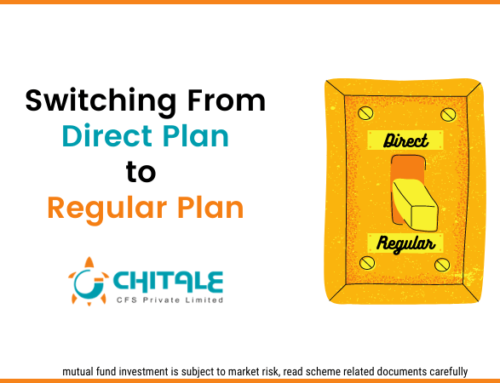The Child Education Calculator is a critical component of goal-based investment planning. Child education planning seems to be critical in light of the rising cost of higher studies.
In India, the cost of education is increasing rapidly and you need to set proper budget targets for the child’s education planning when your kid is younger. In fact the ideal time to plan for child’s education is as early as you start planning for the child.
It allows you to save a large sum of money for the child’s education. But as most of Indian parents are not aware about the importance of child education planning, they mostly rely on education loans when time comes. However, with little planning and investment in advance, parents can build great corpus for child’s education.
The advantage of starting early investment for child’s education is that you can take advantage of power of compounding in long term.
Therefore, if you are certain that you are planning for a child in next couple of years, you must start child education planning at this moment and for this you must select an investment option that provide greater returns by beating the rate of inflation for the specified period of your investment span.
[lwptoc]Inflation Rate in Education:
The cost of education in India is rapidly rising. Right from primary as well as secondary to higher studies, parents are constantly struggling to keep up with the rising educational cost and other educational expenses.
On a yearly basis, inflation rate in education sector is estimated to be increasing by 10% to 12%.
It is estimated that an engineering studies that costs approximately Rs. 5-7 lakh today will cost around Rs. 15 lakh in year 2025, Rs.25 lakh in year 2030 and Rs. 33 lakh in 2033 respectively. Similarly, a medicine course that needs around Rs. 8-10 lakh today would cost around Rs. 31 lakh in year 2025, Rs. 50 lakh in 2030 and Rs. 66 lakh in year 2033 respectively and same is applicable to other courses like MBA, Architecture, Science graduation etc.
Many parents with lack of financial means mostly consider borrowing education loan for the child’s higher education. Nevertheless, education loan should be only considered to fill the gap between the investment you have been doing for your child’s education planning and the actual funds required. But there are great chances to fund your child’s education without a loan if parents start financial planning for child’s education as early as possible!
Education Calculator:
The child education planning calculator is a powerful calculator that enables you to plan for your children’s educational requirements by providing approximate funding estimations for future.
It can show you how money do you need for your child’s education planning. Education planning calculator is based on a mathematical model through which you can insert important details regarding the cost of your child’s education like your child’s age, the estimated inflation rate, number of years for investments etc .
In few moments, the child education calculator estimates the potential cost of your child’s education. Our education planning calculator helps you in calculating approximate money you will need to fund your child’s higher education as well as the necessary monthly investments to achieve your financial target. You can use these 5 best money management apps to manage your monthly expenses.
How to use education calculator:
There are total 7 important fields where you need to put information as described below:
1) Child’s age today (Years):
You need to put your child’s current age in years so that system can calculate how much time you have in hand to reach your financial goal of child’s education.
2) Start College at age (Years):
In this field, you need to put the approximate age at which your child will start his or her college studies.
3) Duration of Education (Years):
You need to add the total years required to complete the college course. For example you can add 4 years in case it is an engineering course of 3 years in case it is a science graduation course. You can also add both graduation as well as post graduation courses at once. For example you can add 5 years in case the graduation needs 3 years of duration and post graduation needs 2 years of duration.
4) Approximate current cost per year (Rs):
In this field, you need to add the current cost of the same course which your child will take during his or her graduation.
5) Any savings for Education already done (Rs):
If you have already started saving for child’s education, you can put the exact amount you have saved so far. This will help the system to calculate the gap between how much you have saved and how much you will need. If you have not stated investing for child’s education, you can add zero in this field.
6) Expected rate of return (%):
You need to add your expected rate of return from your investment. This will help the system to determine what returns you are expecting from your education planning investments. The average rate of returns in case of mutual fund investments in long term is around 12%.
7) Expected inflation rate (%):
As discussed above, this is the rate of inflation at which the cost of education is rising on yearly basis.
Education Calculator Example:
Just to demonstrate how education planning calculator can help you in determining how much money you need to invest for child’s education planning, we are showing how education calculator works:
As mentioned above, we have put 8 years in child’s current age field, 18 years in college start year, 5 years in duration of course field, Rs. 2 lakh in current cost of education per year. As far as the investment amount so far, we have kept zero in this field as we are considering no investment on education planning so far. We are considering 12% rate of returns and 6% inflation rate for this example.
Now once you put all these values and hit on “CALCULATE” button, within a second’s time, the system will calculate the future cost for education.
The system instantly shows that you will need around 20 lakh to meet your financial goal of child’s education plan. It also suggests that you need to invest approximately Rs.9000 per month through SIP or Rs. 6.5 lakh through lumpsum investment to meet your child education planning goal.
This is how with the help of our child education calculator you can estimate how much money you need to invest for child education planning!
Click here to calculate how much funds you need for your child’s education
Best strategies for child education planning:
The best approach here is to determine your child’s education costs. However you cannot foresee whether your child would choose to be an engineer or doctor or even launch his or her own firm. The most secure method of saving is to assume the maximum cost of education and aim at accumulating highest possible amount within a specified time span.
According to Aditya Birla Capital, you can always opt for a systematic investment plan (SIP); investing in equity mutual funds for the long term financial goals can provide optimum returns. You can check this complete mutual fund investment guide for beginners to understand the benefits of investing in mutual fund.
You can always opt for a systematic investment plan (SIP) as investing in equity mutual funds for the long term financial goals can provide optimum returns.
Parents must define a strategy by establishing a separate budget for the child’s educational goals. Today, we have hundreds and thousands of courses available to pursue and it is hard to pick out the best career option for your child at early age. Still parents can shortlist 4 to 5 career options and start planning for the funds by checking the current cost for those career options. Parents can then use the education planning calculator to estimate how much fund child’s education.
You can build significant fund for education planning by investing in a reasonably secure conventional investment schemes such as a PPF or go for mutual fund investments for more aggressive financial planning.
Mutual fund investment options such as equity oriented mutual fund schemes or equity-linked saving scheme (ELSS) can give better returns in long term and recommended for education planning. All you need is to check your risk appetite and the duration of investment.
It is advisable not to avoid direct equity investments for education planning as if you compare mutual funds vs stock market, stock market is more risky as far as education planning is concerned.
Once you set criteria, you need to determine exactly how much fund you need to set aside and invest to fund your child’s education.
It is advisable to invest in diversified equity mutual funds and select few equity focused mutual fund schemes with a blend of small-cap, mid-cap and large cap funds. ELSS is one of the best mutual fund investment options for long term financial planning. ELSS schemes not only help in building good wealth over long term but also provide tax benefits.
It is also important to understand the difference between direct vs regular mutual funds while choosing a mutual fund scheme for child education planning. Direct mutual funds require expertise in investment and sufficient knowledge while choosing the best mutual fund investment scheme from thousands of schemes available in market, while regular mutual funds offer expert guidance from mutual fund distributors who can help you in selecting the most relevant scheme for your goals.
There is no set investment strategy for education planning as every investor has unique financial goals. It is best to consult us regarding your goal based investment plans as we can do a thorough assessment of your financial goals and carefully evaluate your risk as well as investment appetite to provide best mutual fund investment schemes that can help you secure your child’s dreams.
Disclaimer: Mutual fund investment is subject to market risk, read scheme related documents carefully before investing







